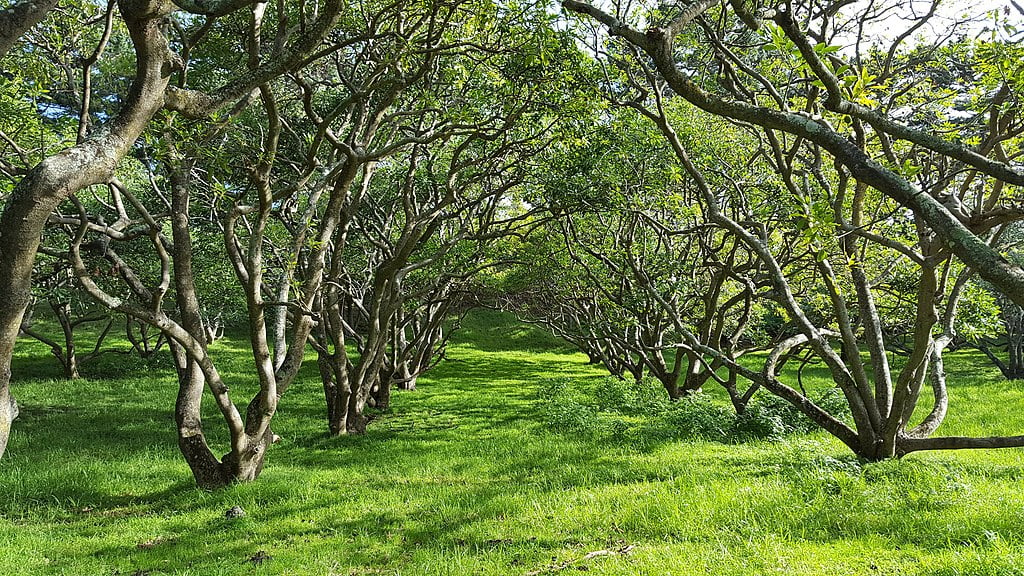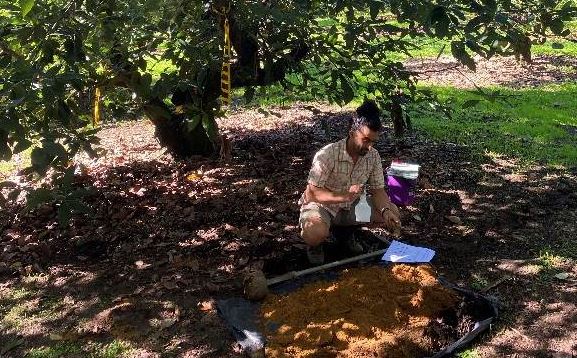Digging for Avocado Gold
Finding what common soil characteristics define a high-yielding avocado orchard could help increase production by creating a benchmark for growers.
The avocado industry is one of New Zealand’s horticultural success stories. In 1939, fruit from nine avocado trees, raised from seed, were sold in Auckland. Sixty years later, there are 4,000 ha of avocado trees bringing $234 million into the country each year.
Around half of the orchards are in the Bay of Plenty area, with large pockets around Whangarei and in the Far North, including 500 ha of new plantings in the last five years in the Far North and 400 ha at Tapora, west of Wellsford in north Auckland.
Growers have become very good at managing their orchards to produce good quality fruit and bigger yields. ”Increasingly, growers are becoming interested in their soil biology as a potential avenue for productivity,” says Phillip West, research director with NZ Avocado’s Research Programme, “but they don’t yet have a benchmark for what an avocado soil should look like.”
Setting that benchmark was the intention of the High-Performance Soils for Avocado project funded by Our Land and Water’s Rural Professionals Fund.
Yields vary greatly
A typical orchard might produce around 10 t/ha of fruit each year. But some regularly produce more than 15 t/ha, and some nearly double that, regardless of which area they’re in and general soil make-up. There are high organic matter soils in the Bay of Plenty, more clay in the Mid-North and sandy soil in the Far North.
Tony Bradley, NZIPIM-registered consultant and head of orchard management company Aongatete Avocados, consults with 65 orchards in the Katikati/Tauranga area and some participated in the trial. He believes the industry needs to be heading toward more sustainable practices to enhance their image in the market.
“We all have slightly different recipes,” says Tony, “so creating the benchmark of what a good high-yielding orchard soil looks like is an important start. From there, they can look at nutrient loss and nutrient performance within those high-yield orchards and how it affects fruit quality.”
For former grower and now NZ Avocado project and sustainability manager Sarah Sorensen, who oversaw the project, issues like compaction and nutrient manipulation were of most interest during her orcharding days. “The current interest in soil biology is showing how quickly the industry is evolving,” she says.
A typical orchard might produce around 10 t/ha of fruit each year. But some regularly produce more than 15 t/ha, and some nearly double that
Seeking balance
Heather and Gavin Chapman have a low-yielding 4.2 ha orchard with good quality fruit at Bethlehem near Tauranga. They have trees planted on raised humped rows to help drainage. They only mow the orchard four times a year to reduce compaction and allow grasses and weeds to flower for the bees, as well to retain soil moisture in the orchard overall in summer. Aside from these things, they generally follow industry guidelines for orchard management and input regimes.
Heather and Gavin were keen to find out what makes the higher-yielding orchards tick.
“We need to understand the relationship between the quality of our soils and our productivity and impacts of the inputs that we make. We might be benefiting our crop, but if you’re actually causing the soil to deteriorate that’s not a sustainable situation either,” Heather says.

Research conundrum
Twenty-nine orchards were investigated in the project (16 were high-yield producing over 15 t/ha average over four years and 13 were low-yield at under 15 t/ha). There was good data already for 17 of the Bay of Plenty orchards, gleaned from being part of an earlier ‘Avovantage’ project. Two additional high-yielding orchards in the area were trialing new cultivars. Five high-yield orchards from both the Mid-North and the Far North were also included.
This saw Miguel Tapia, a research engineer with NZ Avocado, set out on a research odyssey of visual soil assessments and collection of soil, leaf and fruit samples from 10 trees on each of the orchards for analysis. Leaf and fruit samples showed no correlation to yield. Nor did the visual soil assessment relate to yield.

The methods used by Soil Foodweb, Linnaeus and Hill Laboratories to measure the soil biology were different and provided different results. The Hills Hot Water Extractible Carbon method gave a measure of total microbial biomass. Soil Foodweb measured various microbial populations using microscope and counting. Linnaeus used molecular markers to quantify the amounts of different microbial populations. None of the parameters tested correlated well to avocado yield.
Including all data in a machine-learning algorithm showed that no single biological or nutrient variable could be used as a statistically significant identifier of crop performance.
While orchard management practices were not part of the project, the results suggest some correlations may be a result of management on high-yield orchards, rather than from soil characteristics.
Next steps
Although the data did not show any significant results, they can be used to refine future studies. Data from the 17 orchards that participated in this project will be incorporated into the Avovantage project to understand how soil variables, as well as leaf and fruit nutrient concentrations, influence fruit rot.
– Delwyn Dickey for Our Land and Water National Science Challenge
More information:
- Rural Professionals Fund 2020-21
- Download PDF of this article
- All text in this article is licensed for re-use under Creative Commons Attribution 4.0 International (CC BY 4.0)
Author
One response to “Digging for Avocado Gold”
Hello, was information collected regarding orchard inputs such as fertiliser types and rates?
 View Our Strategy Document 2019 – 2024
View Our Strategy Document 2019 – 2024




Leave a Reply